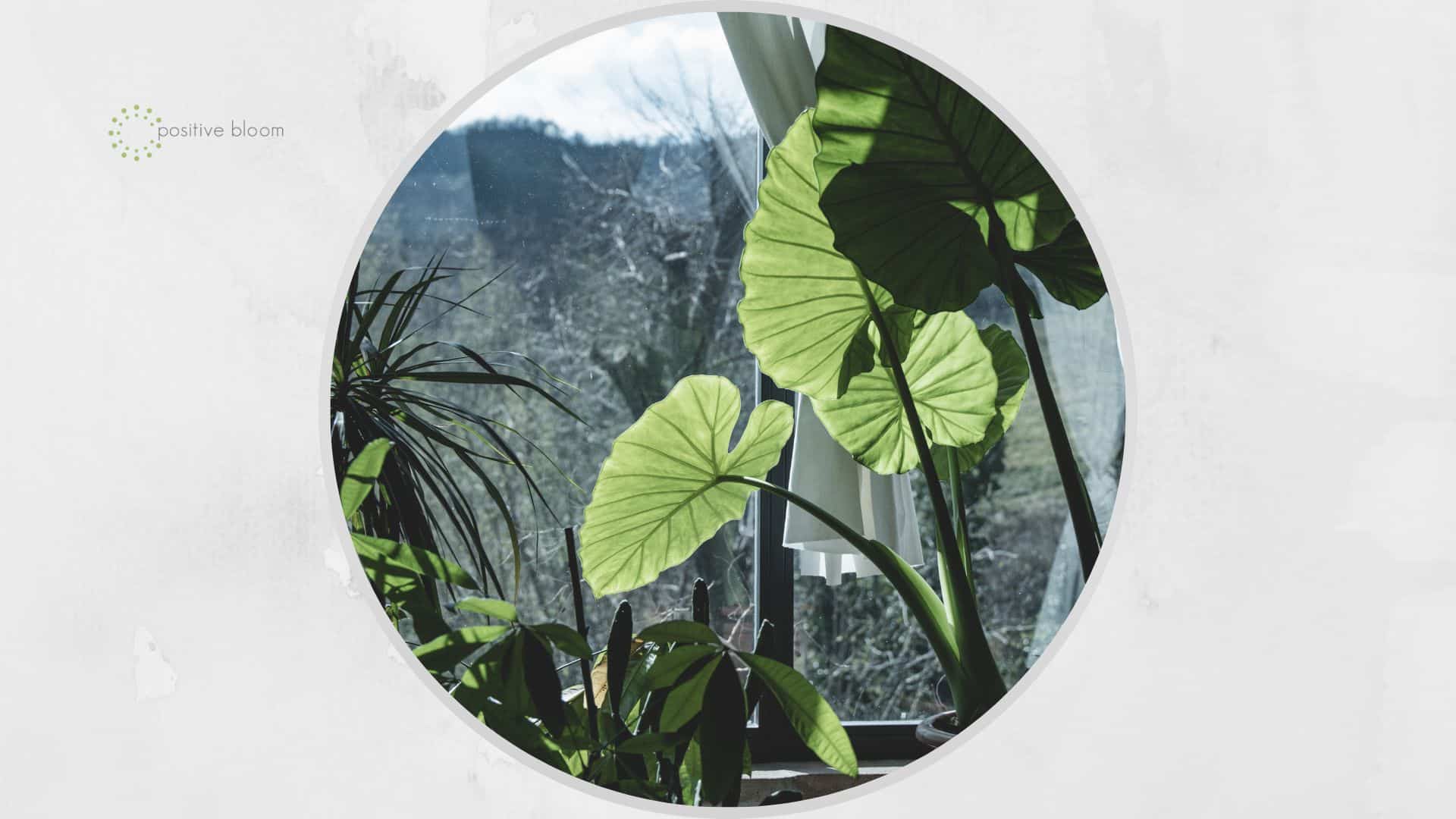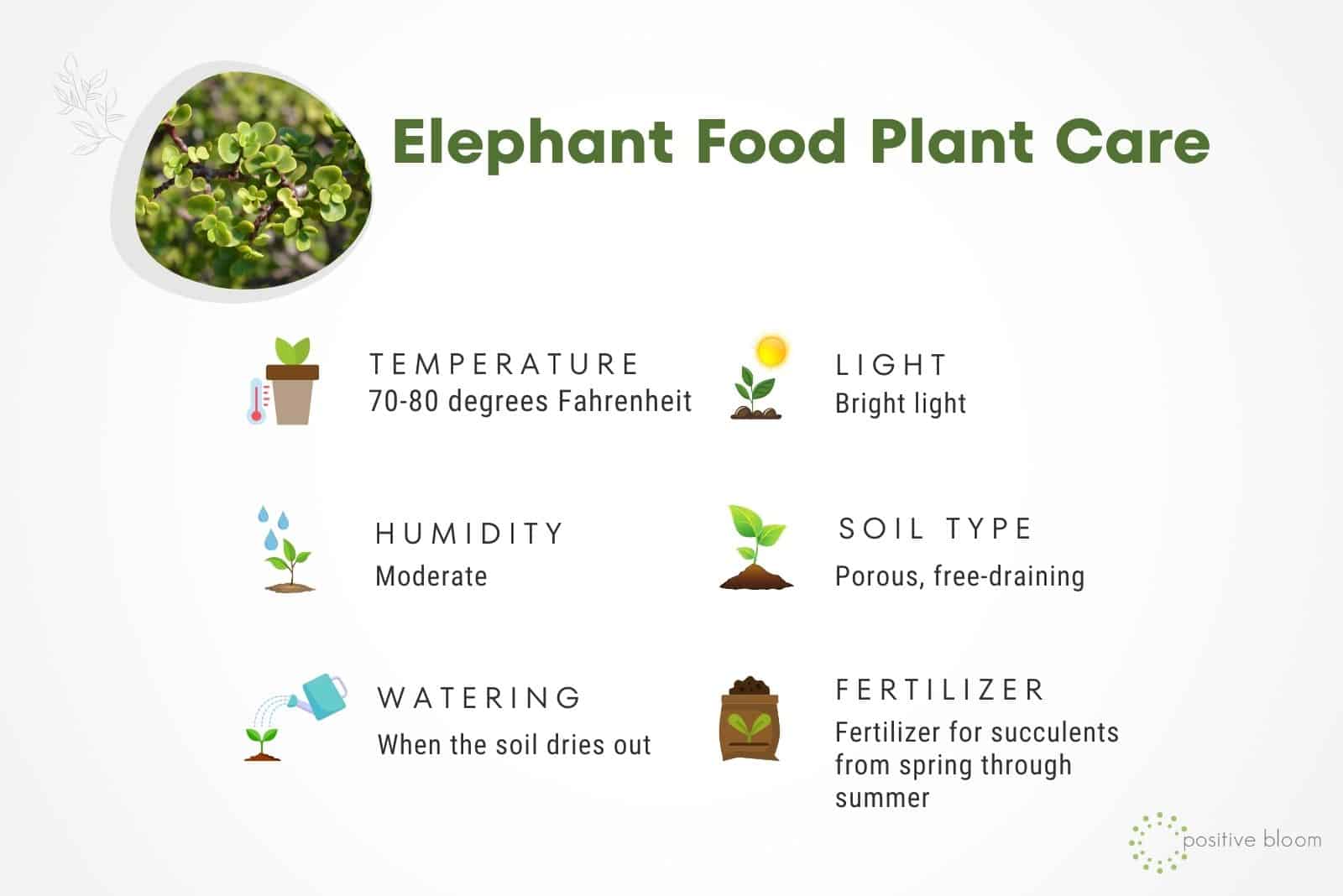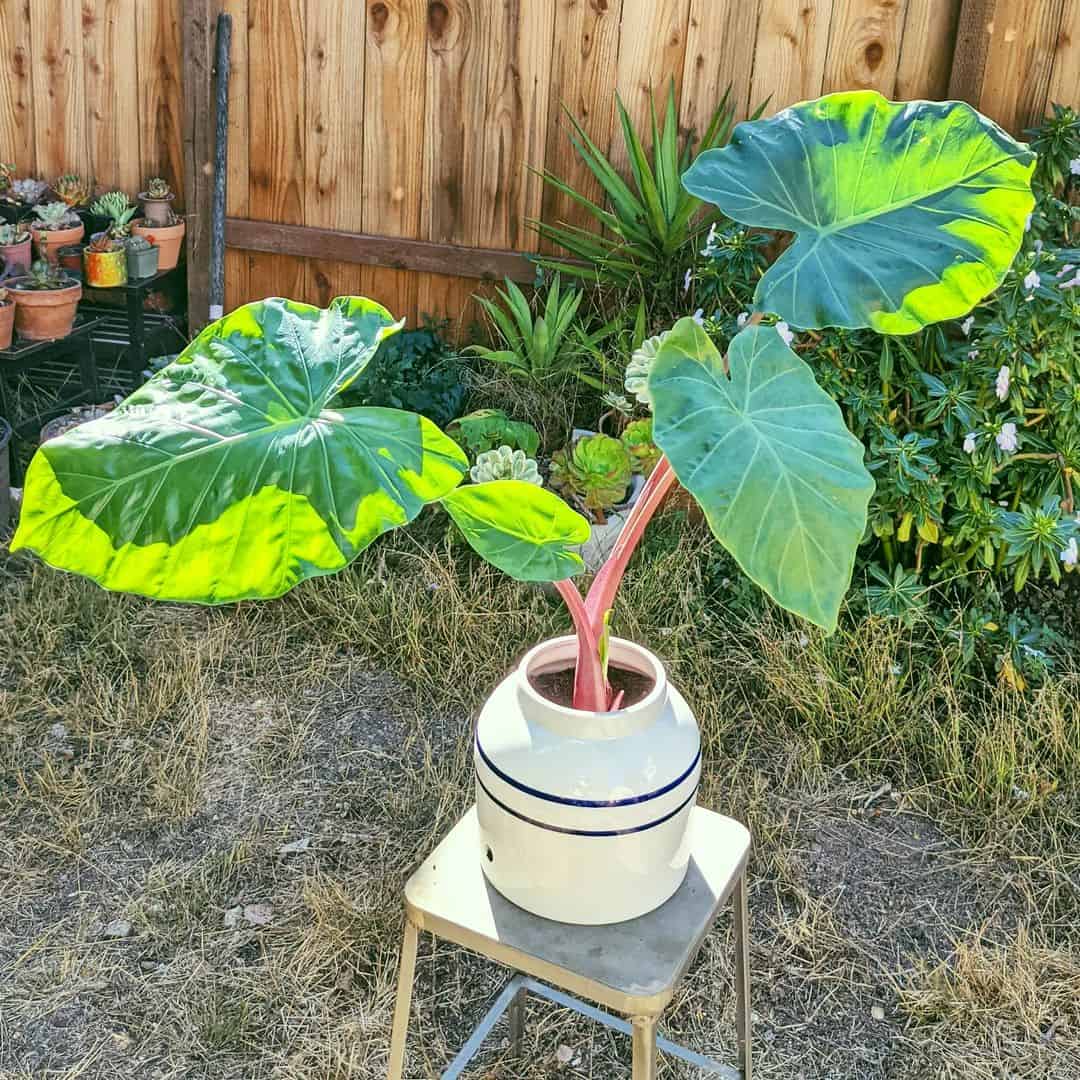Unusual plants, especially succulent species, have always been targets for plant hunters. If the plant has an unusual name as well, their place in collections is all but guaranteed!
There’s one plant that has both an uncommon appearance and a very interesting name – the Elephant food plant! It’s the favorite food of elephants and the favorite plant of many growers.
The round and glossy green leaves perfectly combine with reddish stems. If we add the fact that the plant has a bushy growth habit, there’s no need to mention what an amazing addition it will make to your apartment.
The Elephant bush is simple to maintain indoors, and in this article I’ll show you all the plant’s requirements and some issues you may encounter.
Let’s first cover some basics:
[table id=700 /]
Elephant Food Plant Care
The most common advice on succulents is that they will be healthy if grown in a well-draining growing medium and exposed to bright light.
However, beginners should consider all other plant requirements, such as temperature, fertilization, repotting, and more. Stay tuned to find plenty of tips and tricks on how to keep your Elephant bush happy and healthy.
Let’s get started!
Light Requirements
The best way to maintain your Elephant bush and encourage new growth is by keeping it in bright light.
A spot near a window with southern exposure is an excellent location for the Elephant food plant. If you give it a lot of bright light, you can encourage it to display a more red hue.
A common way of stressing succulents in order to encourage them to display more red color is by exposing them to direct sun.
However, just like all other houseplants, the Elephant food plant can suffer from sunburns. So, if you notice any changes in your plant such as yellowing and browning, move it to a spot with bright indirect light.
Water
There’s one rule when it comes to the Elephant bush plant, do not overwater it! Unfortunately, this is way harder to accomplish than growers think.
Research on the drought tolerance of the Portulacaria afra plant was conducted in 1987 (1), and the plant survived without water for 4 months! This is one of the reasons the Dwarf jade became a common houseplant.
You only need to water your Elephant food plant when the growing substrate is completely dry.
This will occur more during the growing season, i.e., spring and summer because the soil loses water faster due to warmer temperatures.
If unsure about moisture levels in the soil, you can wait until the leaves start shriveling a little bit. Don’t worry, your Elephant bush won’t die and will be back on track as soon as you water it.
Humidity And Temperature Requirements
Another amazing thing about the Dwarf jade is that it doesn’t need high humidity to thrive. The ideal humidity for this Portulacaria plant is around 50%, but slightly lower levels won’t damage it.
If your household isn’t humid and the level of humidity is about 30%, you can mist the plant or get a humidifier.
The humidity level around my Elephant bush plant is about 40% and it seems like my green buddy loves it.
Temperature
The Purslane tree plant flourishes in temperatures ranging from 70 to 80 degrees Fahrenheit.
If you live in USDA hardiness zones 9 through 11, your Dwarf jade can be successfully grown outdoors. For all other zones, I highly recommend indoor cultivation.
I experimented with the temperature around my Elephant food plant by lowering it to 50 degrees. It started displaying a more red hue, which was further proof that cold is another way to stress a succulent.
The problem was that after two months, the leaves of my Dwarf jade started paling, so I had to raise the temperature.
If you are a beginner grower, wait until your Elephant food plant adapts well and you get to know your plant better before stressing it.
Best Soil Type
Since the Dwarf jade is susceptible to overwatering, you need to keep it in a free-draining growing substrate.
Soil porosity is another important factor that contributes to the healthy root development of this plant. (2)
You have two options, make the potting mix yourself or buy ready made soil designed for succulent/cactus plants.
If this is your first succulent, it would be best to go with store-bought substrates.
On the other hand, if you like a challenge and want to try making your own substrate, here’s how I do it. I mix 2 parts perlite with 1 part standard potting soil. You can add other ingredients, such as coarse sand, but my Elephant bush thrives in the two standard ingredients.
Here’s a great video on how to make potting soil for succulents, as well as some amendments you can use:
Fertilizer
One thing is for certain, the Elephant food plant isn’t a heavy feeder. You can harm the plant more by adding a lot of fertilizer than not using it at all.
I add fertilizer for succulents with an NPK ratio of 1:1:2 monthly, but only during the growing season. The essential thing regarding fertilizers for the Elephant bush is using those with low nitrogen concentrations.
Salt buildup in the growing substrate will harm the roots, so skip fertilization during the winter months. Your Elephant bush won’t use nutrients since it isn’t growing actively.
Repotting
There’s one more thing that makes the Dwarf jade plant perfect – repotting! It will grow perfectly if you repot it every two years or wait a little longer if it isn’t rootbound.
The easiest way to tell if the Portulacaria afra is rootbound is by checking the drainage holes. If the roots are poking through these holes, it’s time for repotting!
Here’s how to do it:
1. Prepare a free-draining growing substrate according to the recipe described above, and get a container one size larger than the previous one.
2. Gently remove your Dwarf jade from its original pot and loosen the soil around the roots.
3. Inspect the root system closely; if any of the Elephant bush roots looks discolored or deformed, remove them with a sanitized pair of scissors.
4. Fill the new container halfway with the growing substrate and put your Dwarf jade in it.
5. Add more substrate and pack the soil around the base of the plant.
6. Water your repotted buddy well and enjoy watching it thrive!
Pruning
It’s very important to decide how you will prune your Elephant food plant. You can prune it into the shape of a bonsai or prune it to control the size and remove damaged parts.
If you don’t want to grow your Dwarf jade as a bonsai, only prune when necessary. This means that only discolored or damaged foliage should be removed.
On the other hand, pruning to get a bonsai plant takes a lot of time, patience, and skill, but it’s definitely worth it! There’s nothing prettier than a bonsai Elephant food plant.
How To Make A Bonsai Dwarf Jade
If you have an older, bushy Dwarf jade, here are the steps for how to turn it into a bonsai:
1. Prepare a sharp pair of shears and dip them in rubbing alcohol to prevent contaminating your Elephant bush.
2. Now comes the trimming part. You’ll need to trim a lot, just don’t be scared you’ll harm your Dwarf jade as it will soon start producing new growth. Trim all outer branches until only the main trunk and a few branches remain.
3. You should remove the top of your Elephant food plant depending on how tall you want it to be. After several months you’ll notice a lot of new growth. Of course, you need to ensure correct growing conditions in the meantime.
4. The next step is defoliation. Remove each and every leaf on your Dwarf jade using your hands. Again, new growth will appear after a few months and then you’ll need to repot your bonsai.
5. Take your Dwarf jade from the pot and remove the soil around the roots. You can also cut off any long, thick roots.
6. Put the tree in the new container, wrap the branches using aluminum wire, and position them into the desired look.
As your Dwarf jade displays new growth, prune to maintain the desired shape.
Here’s a video showing how to prune mature Elephant bush into a bonsai:
Propagation
As well as being easy to maintain, the Elephant food plant removes toxins from the surrounding air due to its Crassulacean acid metabolism (2), and plays an important role in herbal medicine (3).
All these benefits make us want more of these amazing plants. Luckily, you can get a new Elephant bush plant by propagating it through stem cuttings. You’ll need a pair of scissors, bleach for sterilization, a nursery pot, and a fresh potting mix.
Here are the steps:
1. Select a healthy 5-inch stem on your Dwarf jade and cut it below the leaf node.
2. Put the cutting on a paper towel and leave it for a few days to develop a callus.
3. Fill the nursery pot with potting mix and put the Dwarf jade cutting in it.
4. Mist the soil and move it to an area with bright indirect sunlight. Mist whenever the soil feels dry and repot the Dwarf jade cutting when its roots reach a few inches long.
Here’s a video on Spekboom propagation through stem cuttings:
Common Problems With The Elephant Food Plant
Although the Elephant food plant is easy to maintain, it’s not completely problem-free. Most problems are caused by common houseplant pests and diseases.
Pests
Mealybugs, aphids, and spider mites are common invaders of plant collections. They love munching on the leaves of Dwarf jade plants.
Don’t use any chemical pesticides if you spot pests. Neem oil and insecticidal soap will do the job perfectly and won’t harm your Elephant bush.
Remember that pests are less likely to invade our houseplants with proper maintenance .
Diseases
When it comes to the Portulacaria afra, you only need to worry about root rot disease. This species is very tolerant to drought, which means it’s super easy to overwater it.
Soggy soil will attract pathogens that will eat the roots of your Dwarf jade in a matter of weeks.
Your Elephant food plant will display wilting, yellowing, and browning, which are the most common symptoms of root rot.
You’ll need to repot your Dwarf jade, eliminate all diseased parts, and apply fungicide to the remaining healthy roots.
Wrapping Up
Because of the lovely, round leaves on reddish stems, the Elephant food plant deserves a spot in every plant collection.
It’s perfect for beginners and those who want to get a unique bonsai.
Just follow our tips and your Dwarf jade will be happy and healthy for a long time!
Until next time!
[sp_easyaccordion id=”19243″]



